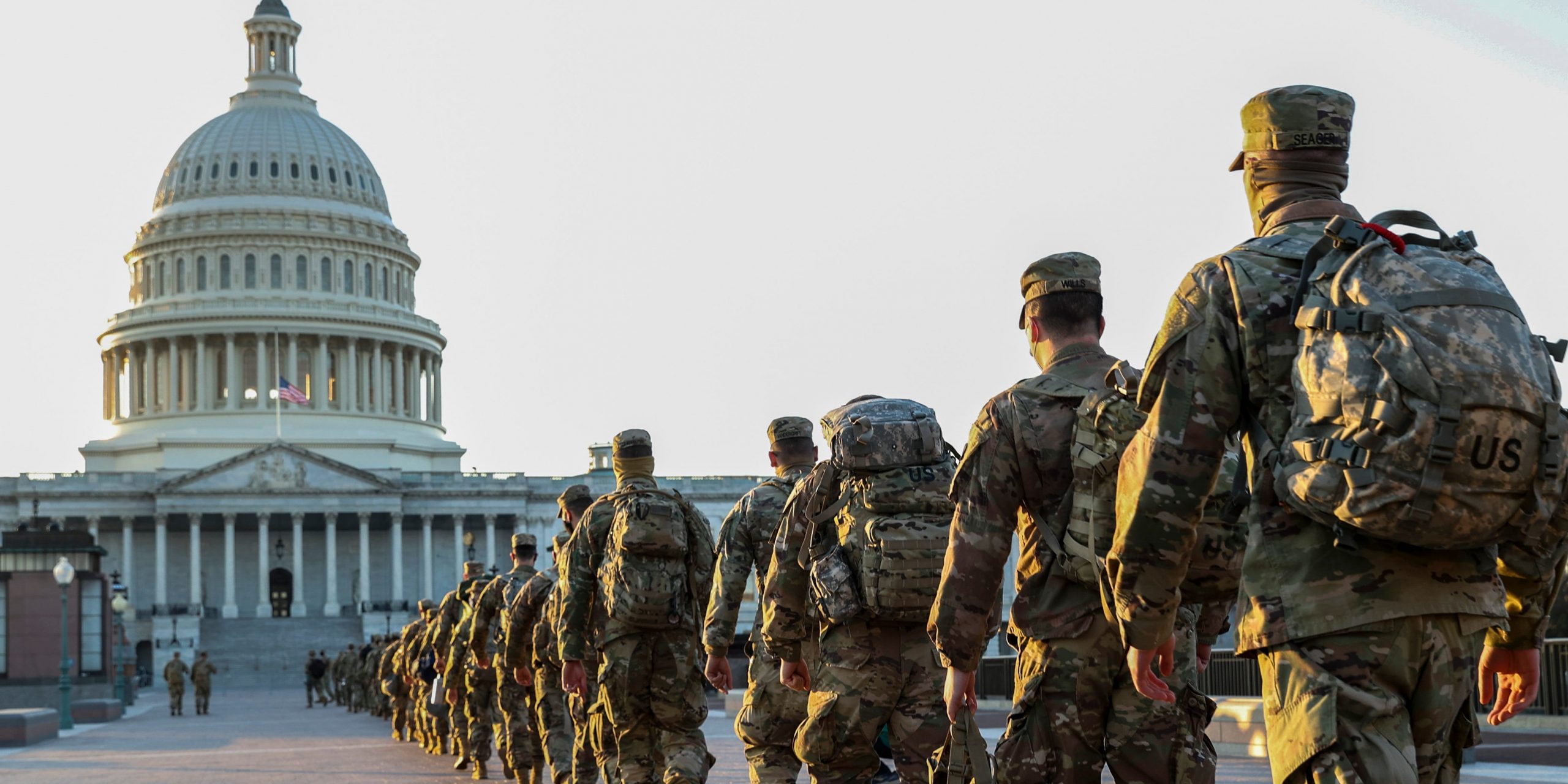
Tasos Katopodis/Getty Images
- Biden’s promise of a return to “normalcy” was belied by his inauguration that took place in a bizarrely empty Washington, DC, under a near-complete military lockdown.
- Walking through the capital on inauguration day, I saw hardly any protesters, Biden supporters or angry MAGA foot soldiers — but there were two heavily-guarded “free speech zones,” both of which were empty.
- Trump no longer has his presidential and Twitter bully pulpits, but he still holds sway over a vast political movement that disbelieves facts and will view every Biden policy move as a salvo in a “civil war.”
- You can’t have normalcy in a political sphere consumed by that level of irrational rage.
- This is an opinion column. The thoughts expressed are those of the author.
- Visit Business Insider’s homepage for more stories.
Joe Biden ran for president as the moderate Democrat, the familiar face who wasn’t going to defund the police or steer the country headlong into socialism.
His appeal, which contrasted starkly with many of his Democratic primary rivals, was that he was a well-known and steady hand who had policy ambitions that were more half-measures than dramatic overhauls.
Biden’s main promise was a return to “normalcy” after the four years of high anxiety that was the Trump era. And he won the nomination handily, before winning the presidency decisively.
But here in Washington, DC on the day of his inauguration, it seemed pretty clear that we’re a long way from that promised normal.
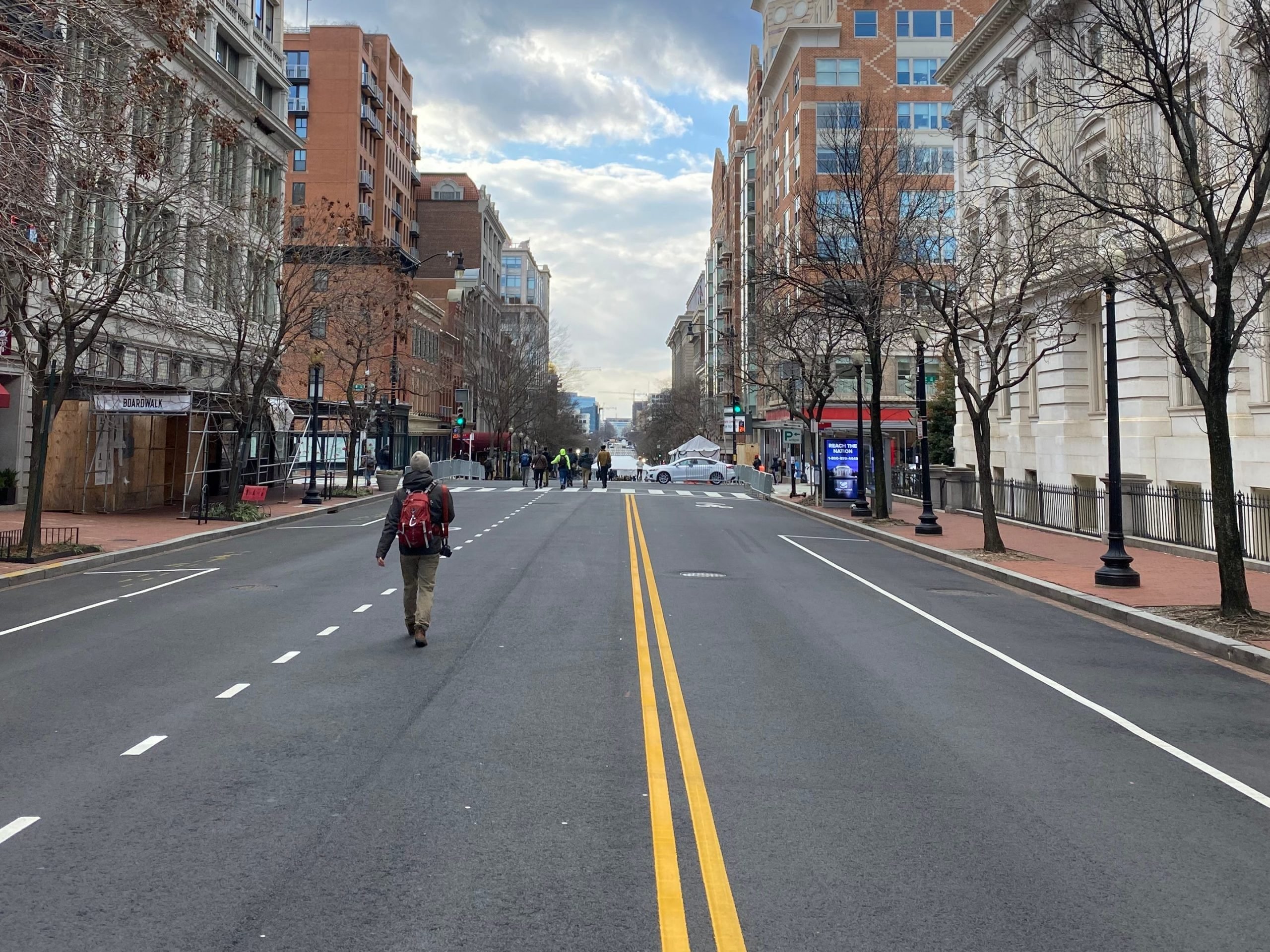
Anthony L. Fisher
What if they threw an inauguration and nobody came?
The streets of Washington have been virtually deserted for days thanks to a military occupation of around 25,000 National Guard troops. A security perimeter including armored vehicles, cement blocks, and ten-foot high fencing envelops downtown DC.
The totality of the security state in the nation's capital was a direct result of the deadly Trump-incited insurrection of the Capitol, just two weeks ago today.
Maybe it was a necessary overcorrection, a show of overwhelming force to preemptively tamp out any riotous reprise.
Or perhaps it was the beginning of a new expansion of the fight against, as Biden called it in his address, "domestic terrorism," where civil liberties are tossed by the wayside in the name of national security.
Either way, if you were outside of the inauguration's inner "Green Zone" - the Washington experience was objectively surreal on January 20.
You could walk for blocks - past boarded-up embassies, government offices, luxury shops, and restaurants - and not see anyone who wasn't military, law enforcement, or a person experiencing homelessness.
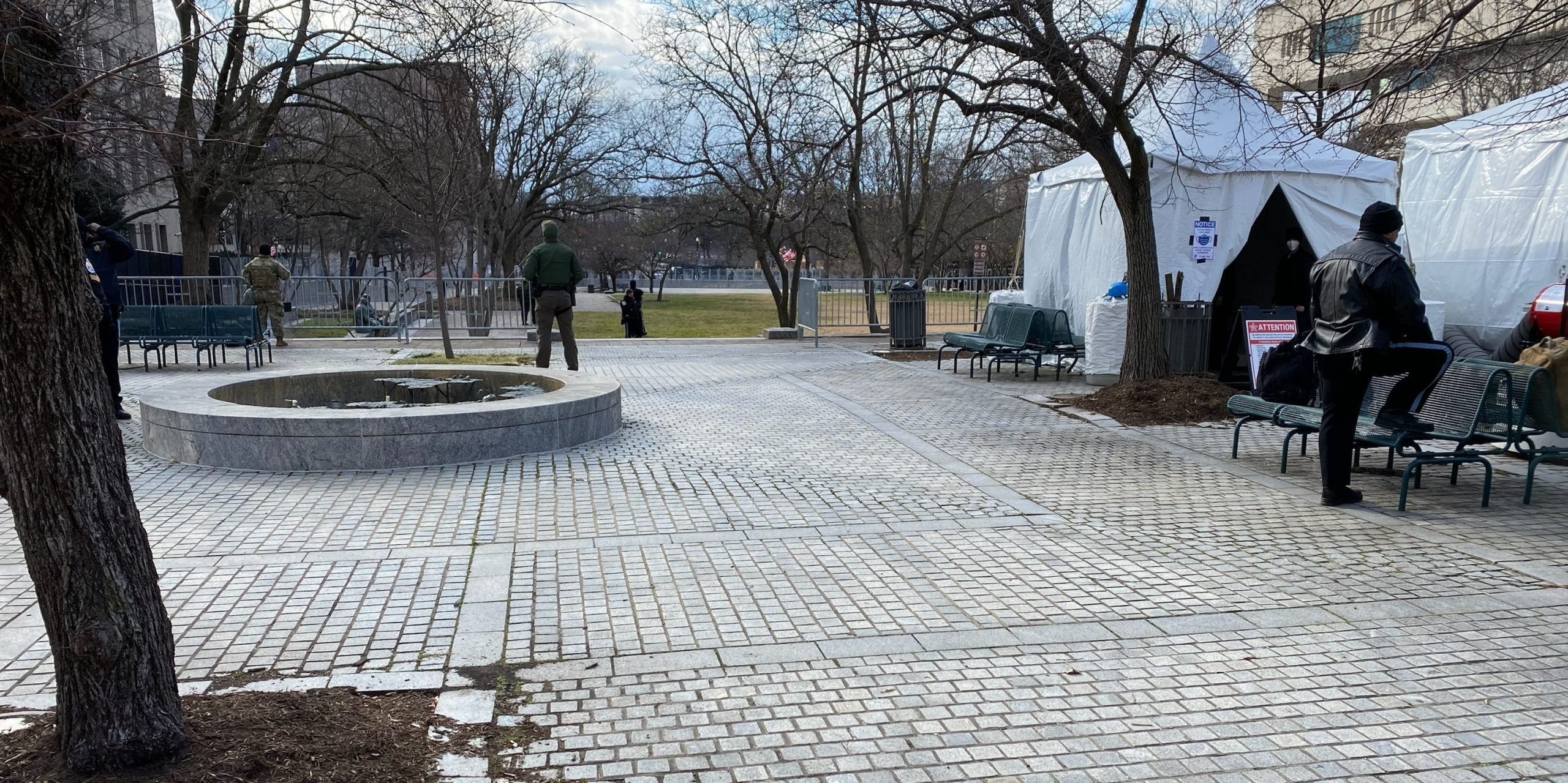
Anthony L. Fisher
I went to one designated "protest zone" near the Navy Memorial. It was closed. So I walked to the other officially-sanctioned free speech zone in Marshall Park.
Standing before a checkpoint with metal detectors and monitored by National Guardsmen, a Secret Service officer confirmed to me that the park was indeed set aside for peaceful protests.
But, he added, the media was prohibited from entering the park. And demonstrators were required to have a permit from the city to enter the park, and that they were not granting any new permits today.
In the few places I found people gathering, the media vastly outnumbered the inauguration gawkers.
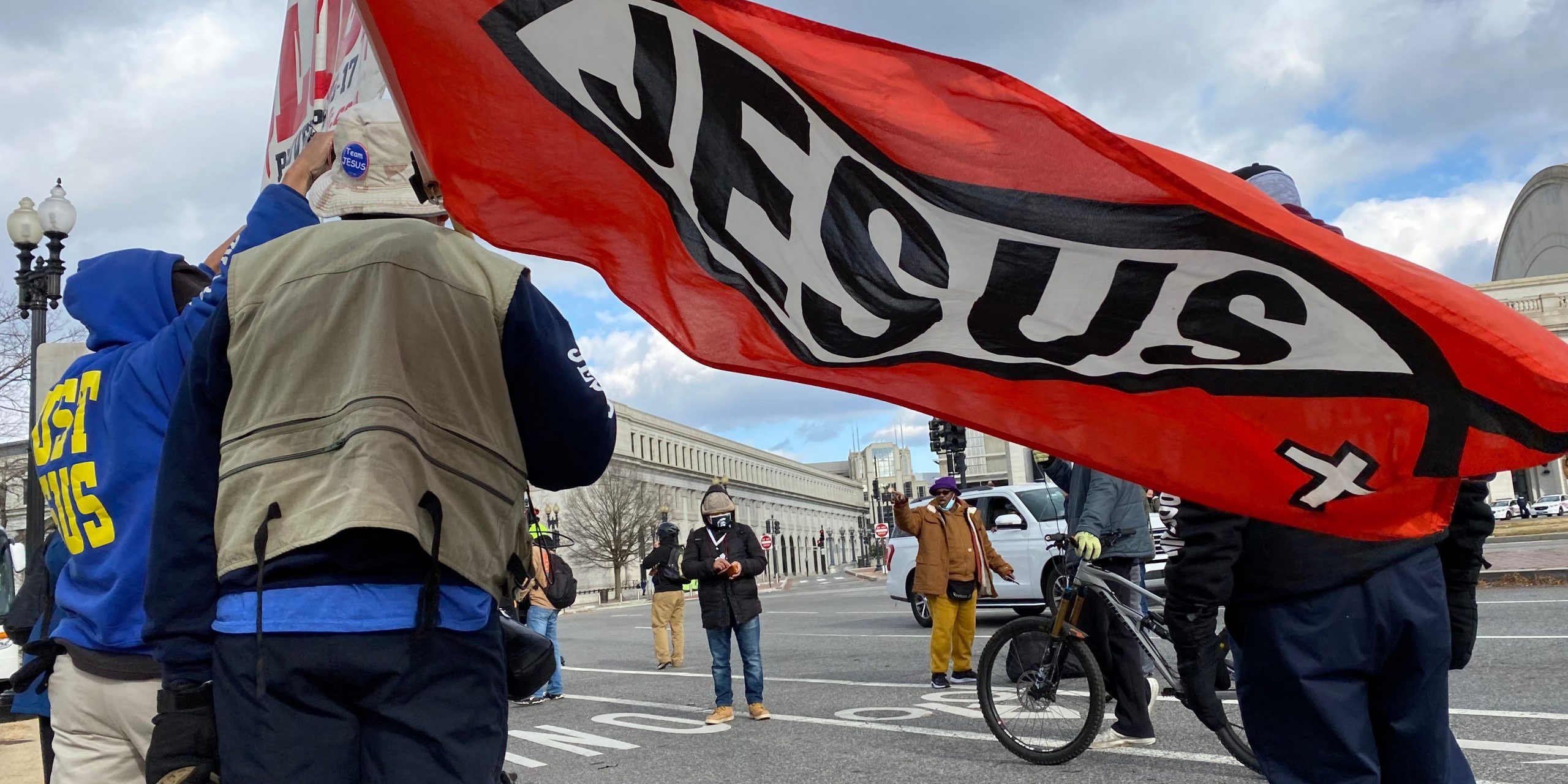
Anthony L. Fisher
There were hardly any Biden supporters, save for a few college kids from nearby George Washington University who popped by. Or the middle-aged couple from Charlotte, North Carolina who told me they just wanted to witness history, even though Biden's transition team had told everyone to stay home because of the out-of-control COVID pandemic that is ravaging the country worse than ever.
There hardly any protesters, save for a handful of peaceful Black Lives Matter demonstrators and a few vitriolic anti-abortion demonstrators.
There were no right-wing extremists, or at least none willing to make their presence known.
The colors and insignia of QAnon, Kekistan, neo-Confederates, neo-Nazis, and Proud Boys that swarmed the Capitol mere days ago were nowhere to be found in Washington.
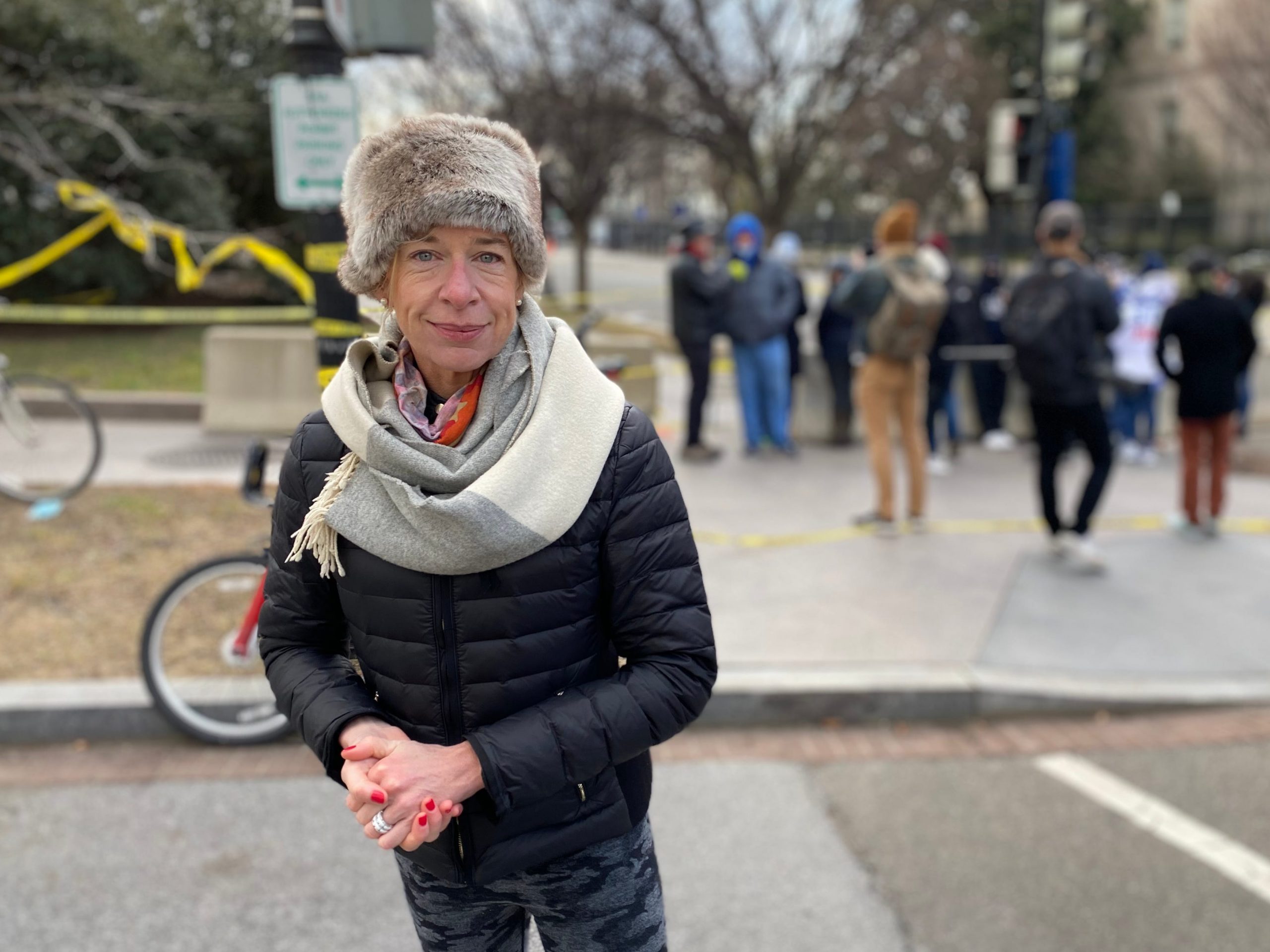
Anthony L. Fisher
Although I did run into far-right British commentator Katie Hopkins - who once called for a "final solution" for Muslims and was retweeted regularly by Trump before they were both banned from Twitter.
Hopkins, predictably, told me she believed the Biden administration would tear down Trump's wall, open the borders to immigrants, and usher in new waves of censorship and socialism.
She also downplayed the Capitol siege, which she described as "a limited number of people that did something that was not appropriate," in contrast with what she said were the majority of Trump supporters who had "a glorious event" on January 6.
Hopkins' politics might be extreme, but her conception of what happened isn't fringe. It's the common position of Trump supporters.
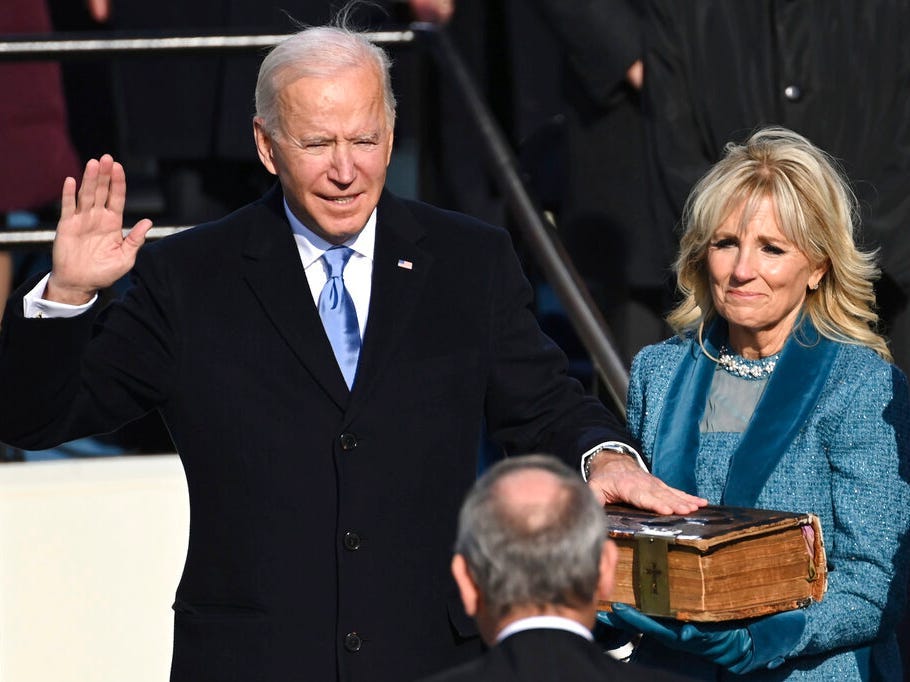
Saul Loeb/Pool Photo via AP
A long way to normal
Biden's inaugural speech called for an end to "this uncivil war," an allusion to the nasty and tribalistic atmosphere seen across the political spectrum over the past four years.
The new president said: "We can join forces, stop the shouting, and lower the temperature … for without unity there is no peace, only bitterness and fury; no progress, only exhausting outrage; no nation, only a state of chaos.
They're just pretty words, and it remains to be seen whether Biden can achieve what he's promised, but even a simple verbal commitment to the idea of decency is already more than we got from Trump.
Trump stoked disunity, often deliberately sowed chaos, and brooked no dissent - even from within his own Cabinet. Bitterness, fury, and outrage were Trump's default modes.
And Trump created a movement with no coherent politics, but with an undying devotion to its Dear Leader.
While not every Trump supporter has swallowed his lies about election fraud, enough of them have to create a lasting crisis of democracy. It's going to take more than a few election cycles for the Trump-voting conservatives to re-engage with reality and accept free and fair election results where the Republican loses.
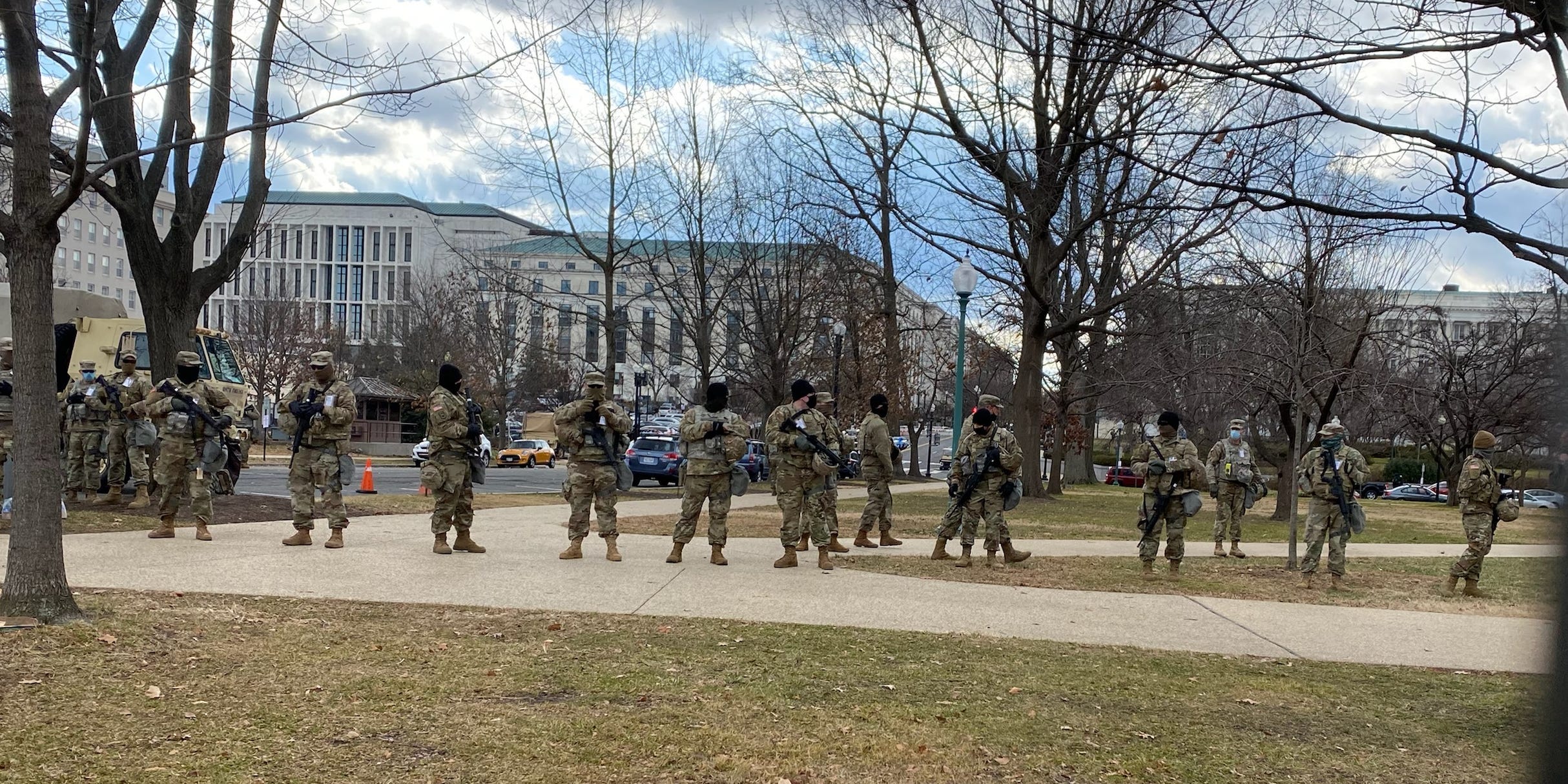
Anthony L. Fisher
Trump doesn't have the presidential bully pulpit anymore, nor does he have his Twitter megaphone.
But he still has OAN, Newsmax, and to some extent, Fox News available to him to speak to his base, which remains far more devoted to him than it does to the Republican establishment.
Trump can no longer "stop the presses" with an unhinged tweetstorm, but he leaves behind a dangerously misinformed movement that inexplicably believes the election was stolen, and no amount of retractions from the media outlets who propagated that "Big Lie" will change these MAGA minds.
That means the possibility of returning to a "normal" where policy differences aren't framed as salvos in a literal "civil war" isn't anywhere on the near horizon.
Any action taken by the Biden administration that makes lives easier for immigrants, expands social services or re-engages with the international community will inevitably still be seen by Trumpworld as part of a globalist/socialist conspiracy to destroy America.
You can't have normalcy in a political sphere consumed by that level of irrational rage. And you certainly can't hope for normalcy until the pandemic - which continues to kill thousands of Americans on a daily basis- has been wrested.
With hope, the Capitol siege might have been the last gasp of the worst, most violent elements of Trumpism. But the attack's reverberations - greater political distrust, cultural divisiveness, and a ramped-up security state - are only in their early stages.
And the bizarre spectacle of a nearly vacant DC on Inauguration Day demonstrates that it's going to be some time before we get to "normal."
- Read more:
- Biden's inauguration was be held in a sad, military-occupied DC. Never forget how Trump got us here.
- Trump's barbarism isn't just on display at the Capitol, he's also on a death penalty killing spree.
- The right-wing conspiracy theories that fueled the Capitol siege are going to instigate more violence
- Progressive Rep. Ro Khanna on holding Trump accountable for the Capitol siege, ending the 'forever wars,' and working with conservatives to bridge America's cultural divide